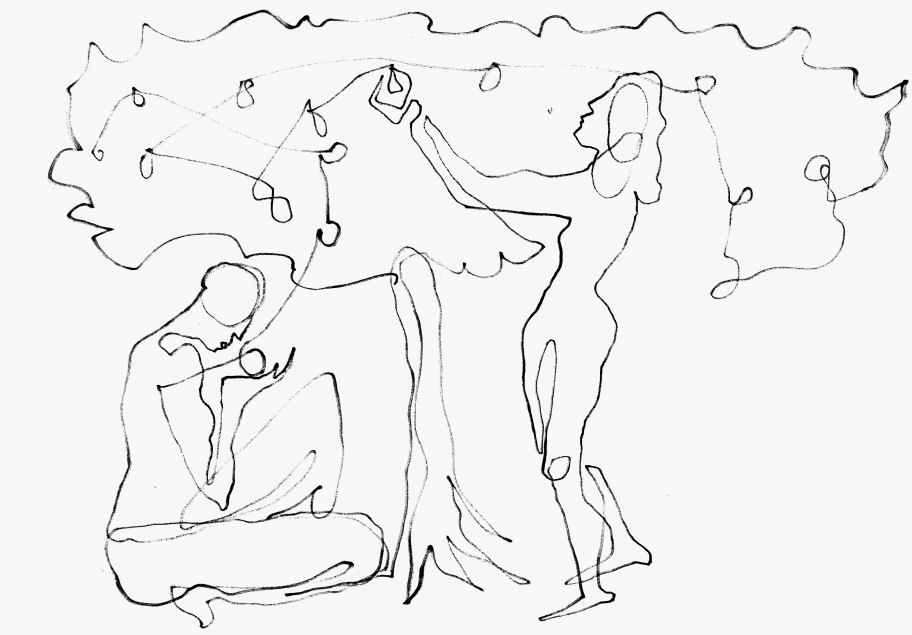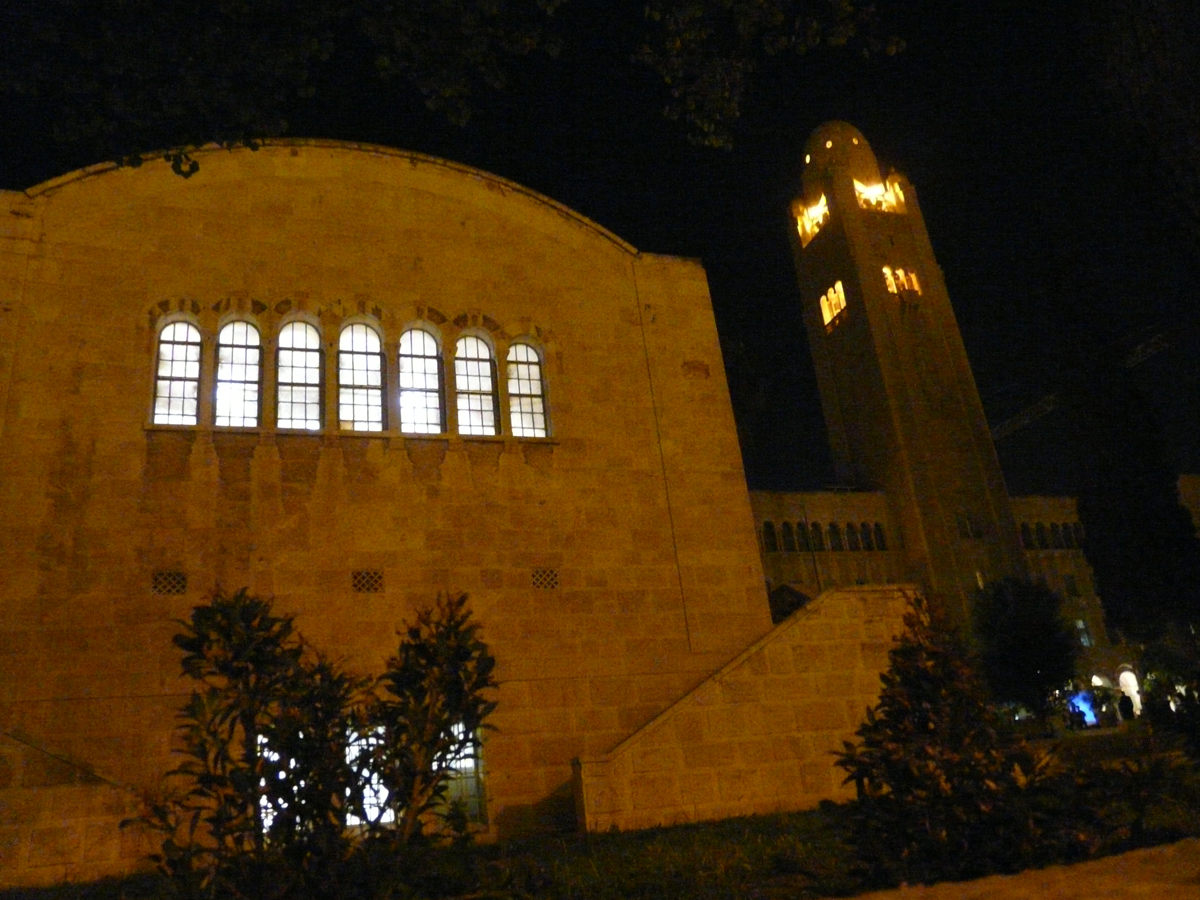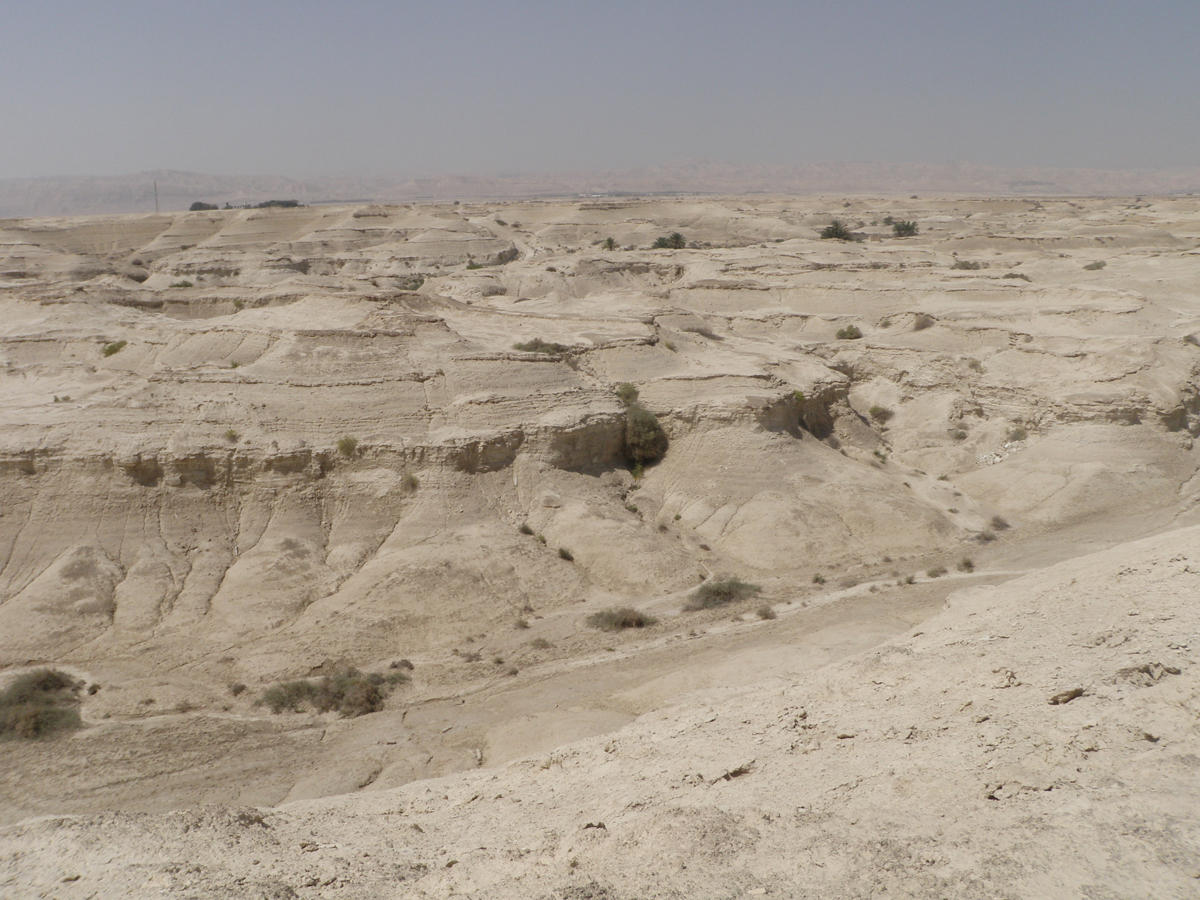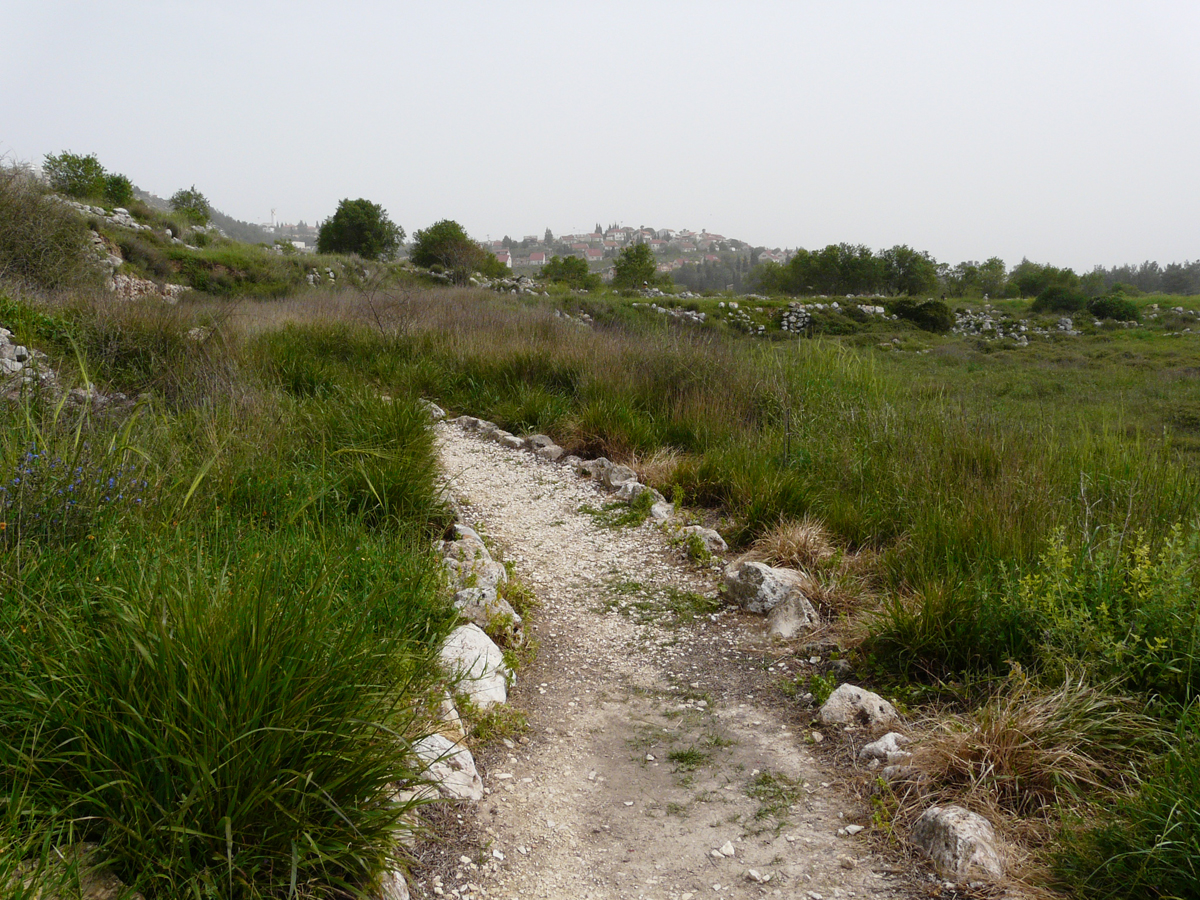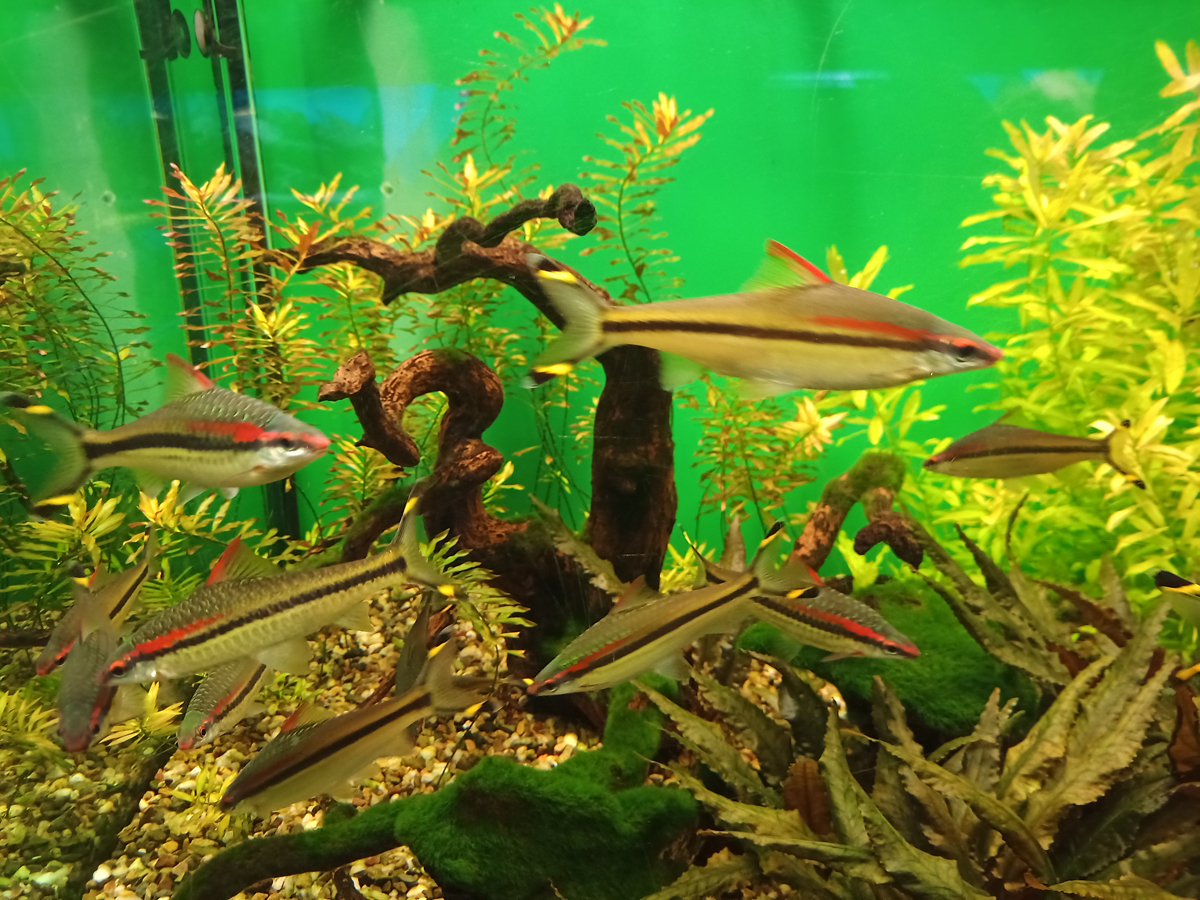One aspect of Jesus' suffering on the cross as documented by the Shroud of Turin (hereinafter referred to as the Shroud) has been avoided even by those who study these things in great detail, because for many, the very thought of it is painful and hurtful.
The Shroud has been accepted by many as the burial cloth of Jesus, witnessing not only his death but also his resurrection. Nothing can legitimately refute all the scientific evidence that the image on it cannot be explained as the work of man.
The Shroud not only shows an image of a man who was severely physically tortured, in full length from the front and back, but also images of various objects, such as coins on his eyes.
There is no evidence of any other man in history who was crucified wearing a crown of thorns, as described in the Bible. The Shroud shows an image of a man with bloody marks on his head, which suggest a helmet rather than a crown of thorns. Of course, it can be argued that thousands of people have been crucified throughout history (the death penalty by crucifixion was abolished after 500 years of use by Constantine in the 4th century AD), and that there may have been more than one king who was mocked before his painful and humiliating crucifixion by being forced to wear a crown of thorns.
However, it is written about Jesus that he was the king of the Jews, not the king of another nation – and that this was his crime, as recorded by two evangelists – Matthew in chapter 27, verse 37: Above his head they placed a sign with his crime written on it: “This is Jesus, the King of the Jews,” and Mark in chapter 15, verse 26: “There was a written inscription of his guilt: King of the Jews.” The other two evangelists, Luke and John, also stated that there was such an inscription above Jesus' head. Luke 28:38: “Above him was a sign written in Greek, Latin, and Hebrew letters: ‘This is the King of the Jews.’” John 19:19: “Pilate wrote a sign and fastened it to the cross, on which was written: Jesus of Nazareth, King of the Jews” (Czech Study Translation). The Bible requires two witnesses, and here we have four.
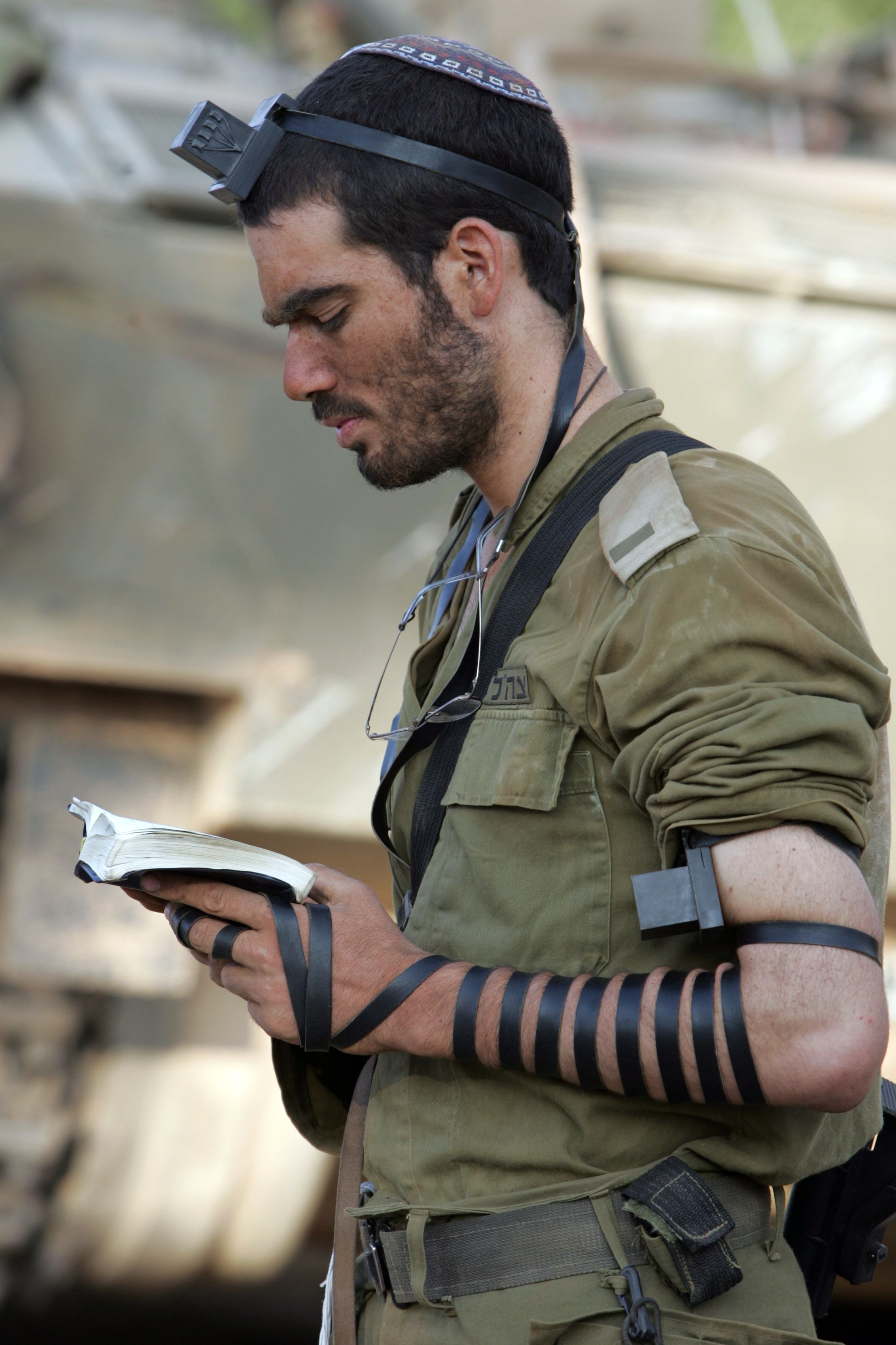 IDF Officer Asael Lubotzky with tefilin. J.Lemmer, CC-BY-SA-4.0
IDF Officer Asael Lubotzky with tefilin. J.Lemmer, CC-BY-SA-4.0
How could one recognize the “Jewishness” of the King of the Jews at first glance? Jews are referred to as the “people of the Book”. The Book refers to the 39 Old Testament books consisting of the five books of Moses forming the Torah, the Prophets (Neviim) and the Writings (Ketuvim), which were the only Scriptures - records of God's word to the people during Jesus' lifetime. This Book also says that God's people should bind His word to their foreheads and hands: "And these words which I command you today shall be in your heart... Bind them as a sign on your hand, and let them be a mark between your eyes“ (Deuteronomy 6:6-8). The same is repeated in Deuteronomy 11:18: ”Put these words of mine in your heart and in your soul. Bind them as a sign on your hand, let them be a mark between your eyes."
The Jews have always observed this commandment and continue to do so by tying leather straps (called tefillin) to their foreheads and to their non-dominant hands, containing passages from Scripture with which they pray. Jewish boys are introduced into adulthood at the age of thirteen during the bar mitzvah ceremony, when they read a Hebrew passage from Scripture and pray publicly for the first time with prayer straps and phylacteries. These prayer straps are specific to Jews; members of other nations do not use them.
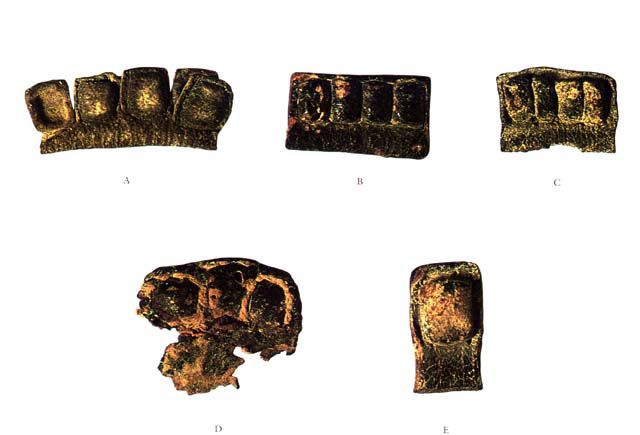
Leather phyllacteries from the first century CE found in Qumran. IAA, CC-BY-SA-PD-old
Did Jesus also use such prayer straps and boxes? He took care to do everything the Father asked of him, so there is no reason to doubt it. Jesus comments on tefillin at the beginning of Matthew 23, where he talks about the teachers of the law and the Pharisees who “do all their deeds to be seen by others. They widen their prayer straps and lengthen the tassels on their garments...” (verse 5). So he was not criticizing the use of prayer straps itself, but the ostentatious behavior of these men, who showed off with their prayer straps and tassels. The desire to gain the attention of others is evidence of dependence on people rather than on God, which, according to Jeremiah chapter 17, leads to a curse.
A well-preserved phylactery from Jesus' time was found in a Qumran cave and came into the hands of Israeli archaeologist Yadin from Hebrew University, who immediately recognized what it was, even though it was much smaller than the phylacteries used today. It was only 20 mm long and 13 mm wide, made of a piece of leather, folded and sewn together on three sides. Inside, like in a pocket, were four tiny bundles of thin leather, each in its own recess. The largest measured 27 mm in height and 44 mm in width, each tied with a hair and inscribed in such tiny letters that 26 lines of text from the second and fifth books of Moses fit into 27 mm: Exodus 13:9; 13:16; 6:8 and 11:18; Deuteronomy 6:4-9 and 11:13-21. The four-compartment box for four scrolls was attached to the forehead, and the single-compartment box for one larger scroll was attached to the arm.
More ancient prayer straps and phylacteries were found, some further away from Qumran in the Judean desert. Although some are damaged, they have become a separate subject of study for a number of researchers, who have also examined them as textual sources. Biblical texts were found not only inside the phylacteries, but also on the straps. However, only in Qumran, where many of the most devout copied the Scriptures, were long passages from Exodus 12:43–13:16 and Deuteronomy 5:1–6:9 and 10:12–11:21 found on the straps.
By now, you have probably guessed that some researchers have also distinguished the image of prayer straps and both phylacteries on the image of the man on the Shroud of Turin and, moreover, have found the courage to report on it.
When Paul Vignon compiled a list of fourteen signs in the 1930s that proved that various artists used the image on the Shroud as a model for depicting Jesus, primarily on icons, one of the common signs was the inverted V on the forehead of the man whose image remained on the Shroud. Haralick also noticed this when he analyzed the image on the Shroud in 1983 and described it as a line formed by the phylactery of the head. The Whangers continued to work on this, and new high-resolution analyses of the image confirm it, although others claim that it is pareidolia, or “seeing what you want to see.” But the question is whether the opposite is true for those in the other camp, i.e., “I don't see what I don't want to see.” Judge for yourself.
In the snap from this video, lines can be seen on the right side of the man's left arm, which are highlighted by the outline of the straps in the image on the left. Notice that also the white blood stains on the left arm have a strange, seemingly interrupted pattern or texture.
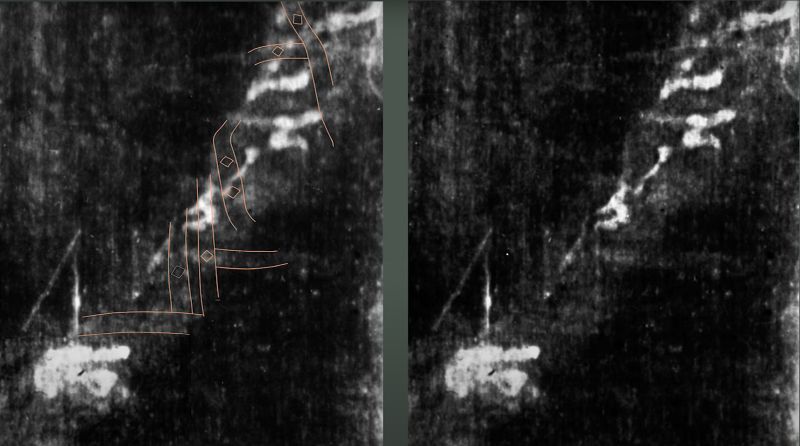
Shroud image of the man´s left hand with prayer straps. Snapshot from https://www.youtube.com/watch?v=xAVZp9tW5FU
The presence of prayer straps on the body of our man on the Shroud can be explained by the fact that he prayed with them in the Garden of Gethsemane, where he was captured, and that they remained on him during interrogations, harassment, flogging, and crucifixion as the “King of the Jews,” and because they were stained with the “blood of life,” he must have been buried with them.
As if all that torture were not enough, the Whangers noticed yet another object on the image of the man's chest, which resembled the genealogical cameo of the then-reigning Emperor Tiberius, or his portraits on medallions, rings, or coins.

Tiberius (seated with his mother Livia on the throne in the center) on a genealogical cameo made of sardonyx. CC-BY-SA-2.0
Why was the emperor's image so humiliating for the “King of the Jews”? The high priest of the Old Testament wore prescribed clothing, which included a breastplate with twelve stones; each tribe of Israel was represented by one precious stone. This symbolized the work of the high priest, who prayed for all the people and offered the prescribed animal sacrifices for sin on their behalf. He brought the blood of these animals to God for atonement, asking for forgiveness for his own sins and those of all the people. In the New Testament, this role of high priest and sacrificial lamb was taken over by Jesus, who, being sinless, offered himself as a sacrifice: his blood was shed for the forgiveness of the sins of every human being. From that moment on, animal blood was no longer necessary. It is written that “God made him who had no sin to be sin for us, so that in him we might become the righteousness of God” (2 Cor 5:21).
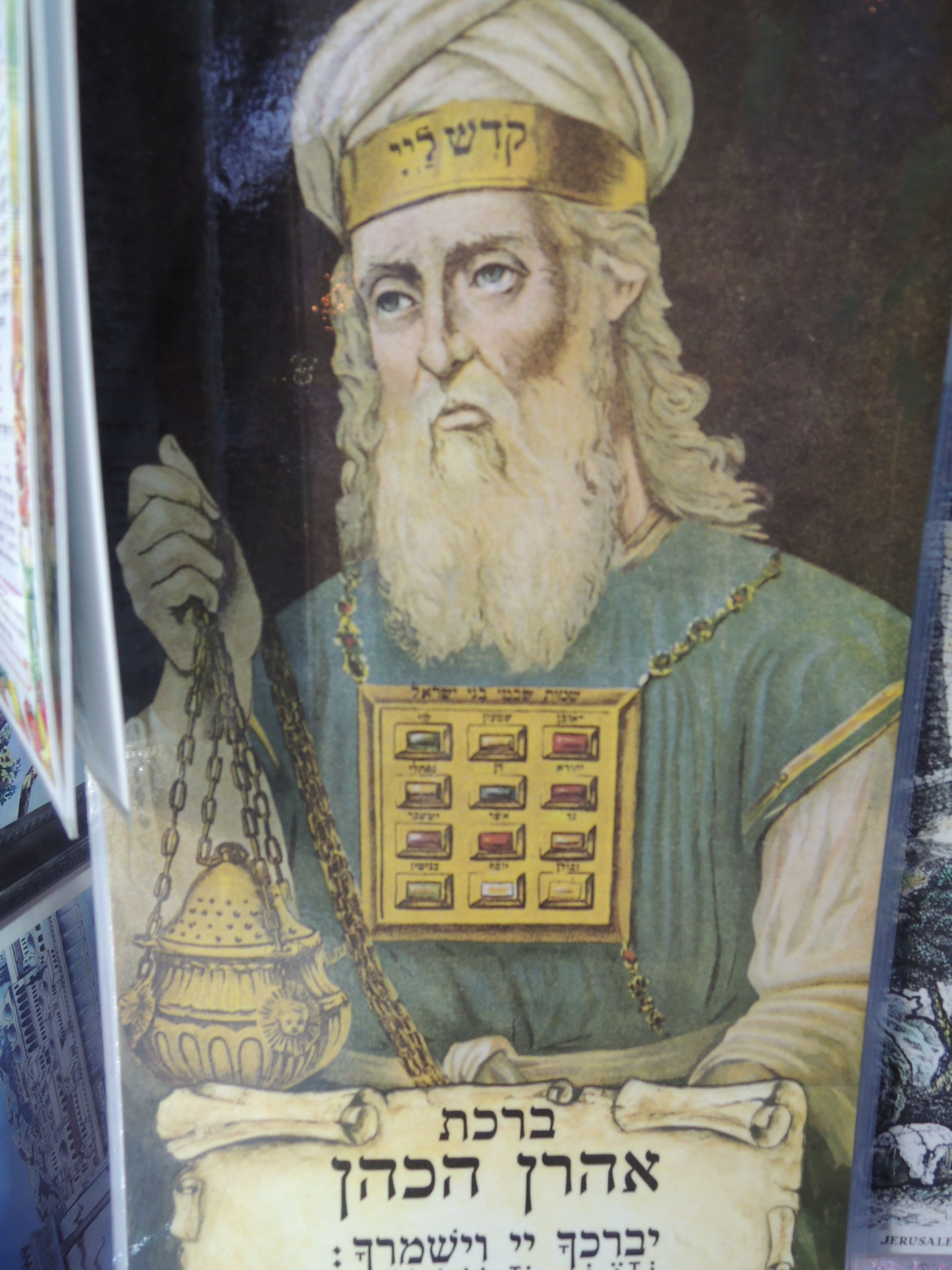
Aharon, the high priest with a breastplate, depicted in a painting in a Jerusalem shop. Photo by the author.
It was probably the Roman soldiers who had previously tortured and mocked Jesus, who hung a pendant around his neck that most resembled a cameo depicting Emperor Tiberius sitting next to his mother Livia on the throne, as a divine ruler and high priest. From the image of this pendant on the Shroud, something like two bundles of thin strings or tassels hang down. The Whangers believe that these were tassels from Jesus' cloak, which were removed by those who cast lots for his clothing. Tassels on Jewish clothing are another distinguishing feature. According to Numbers 15:38-39, they are meant to remind people of God's commandments. Roman soldiers did not need such tassels. However, they used them for what was perhaps their last act of bullying when they tied them to the emperor's talisman, which they placed on Jesus' chest, where the high priest wears his breastplate, thereby humiliating not only Jesus, but also the reigning high priests Annas and Caiaphas, as well as all the Jewish people. 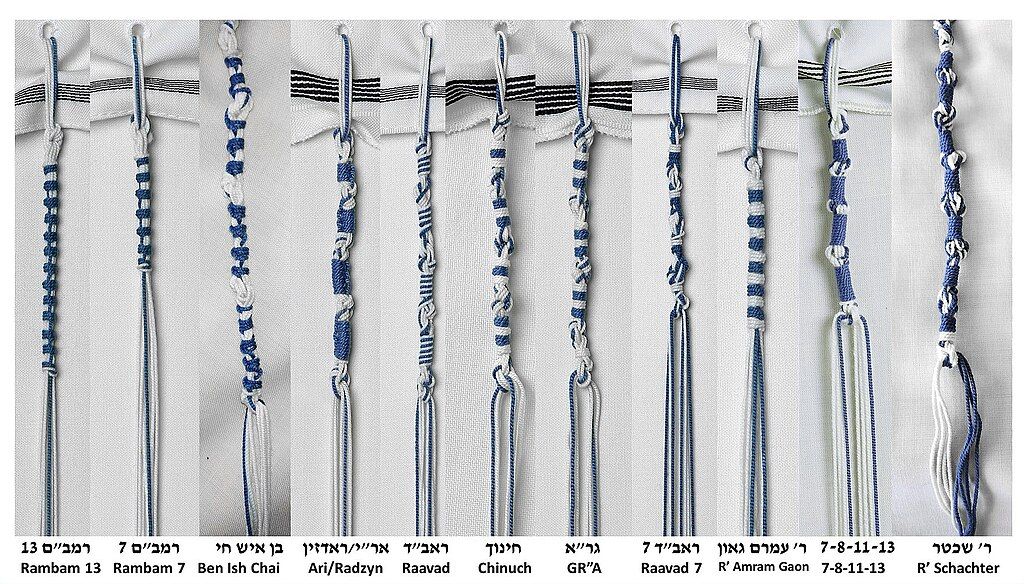
Tzitzit - fringes of prayer shawls; various ways of tying. Ptil Tekhelet, CC-BY-SA-PD-4.0
But Jesus died for all people, including Tiberius and the Roman soldiers who tortured him, so that no one would have to spend eternity in the worst place imaginable, where there is not even a shred of compassion or kindness, let alone love.
Jesus' death on the cross and his resurrection opened up access to God's presence even to pagans. Today, we can see prayer straps not only on men, for whom tefillin have long been the domain, but sometimes also on women. And in the tallit, a prayer shawl with fringes, pagan believers, men, women, and older children pray quite commonly. Many of them have a ribbon embroidered with the sixth verse of David's Psalm 122 in Hebrew, which is a word play and sounds very melodious: ŠAALU ŠALOM JERUŠALAJIM JIŠLAJU OHAVAJICH; sung, it sounds like this: www.youtube.com/watch?v=TXKeVf4tFzQ and in English: Pray for the peace of Jerusalem! May those who love you prosper.
Sources:
- Feldman, A. 2022. Tefillin and mezuzot from Qumran: New readings and interpretations. Beheifte zur Zeitschrift für die alttestamentliche Wissenschaft (BZAW) 538: 1-31. DeGruyter, Berlin.
- Feldman, A. 2023. Some observations on the scribal practices in tefillin from Qumran. Revue de Qumran 35(2) [122]: 175-183. doi: 10.2143/RQ.35.2.3292611
- Haralick R. M. 1983. Analysis of digital Images of the Shroud of Turin. Virginia Politechnic and State University.
- Millard, A. 2000. Objevy z biblických časů. Archeologické poklady z biblických časů. Zázraky Persie. Euromedia Group, k.s. Knižní klub. 352 stran. ISBN 80-242-0167-4
- Whanger M., Whanger A. 1998. The Shroud of Turin. An adventure of discovery. Providence House Publishers. ISBN: 1-57736-079-6
- https://www.youtube.com/watch?v=xAVZp9tW5FU
